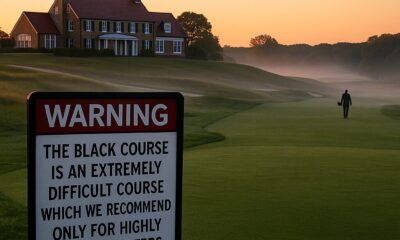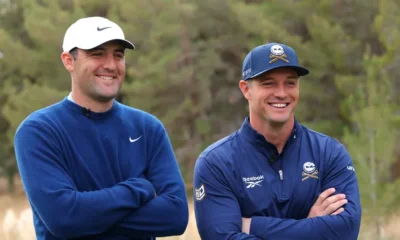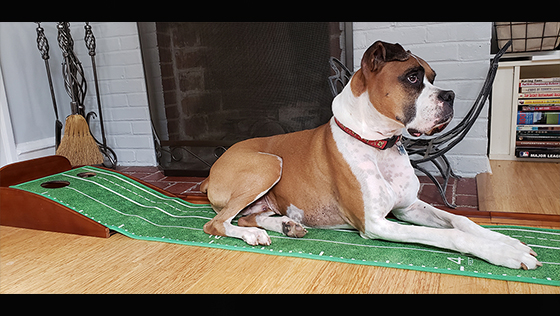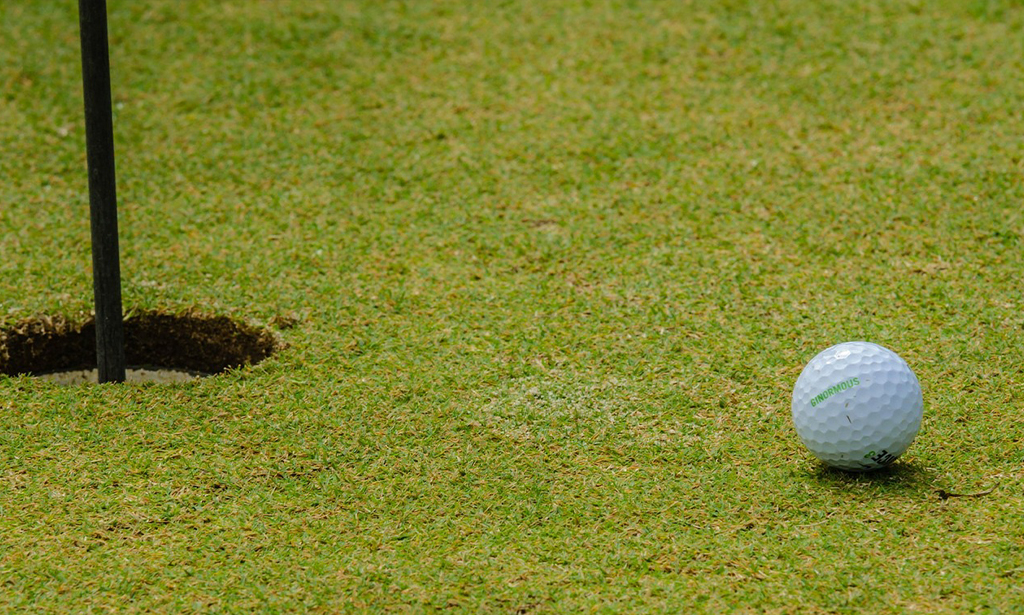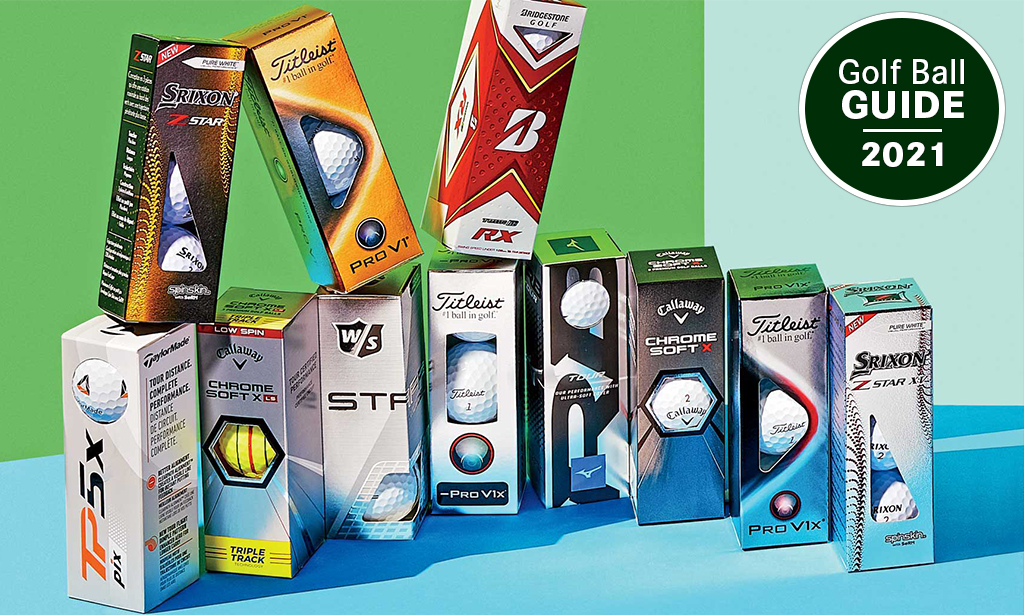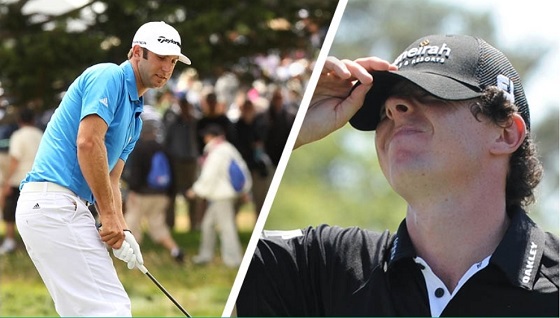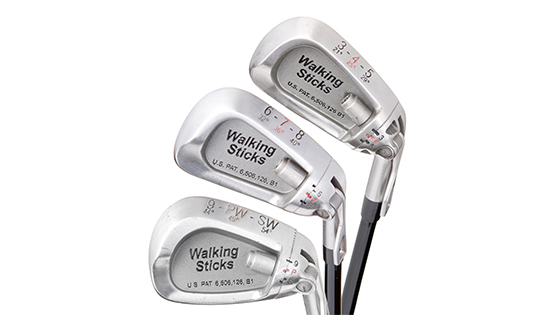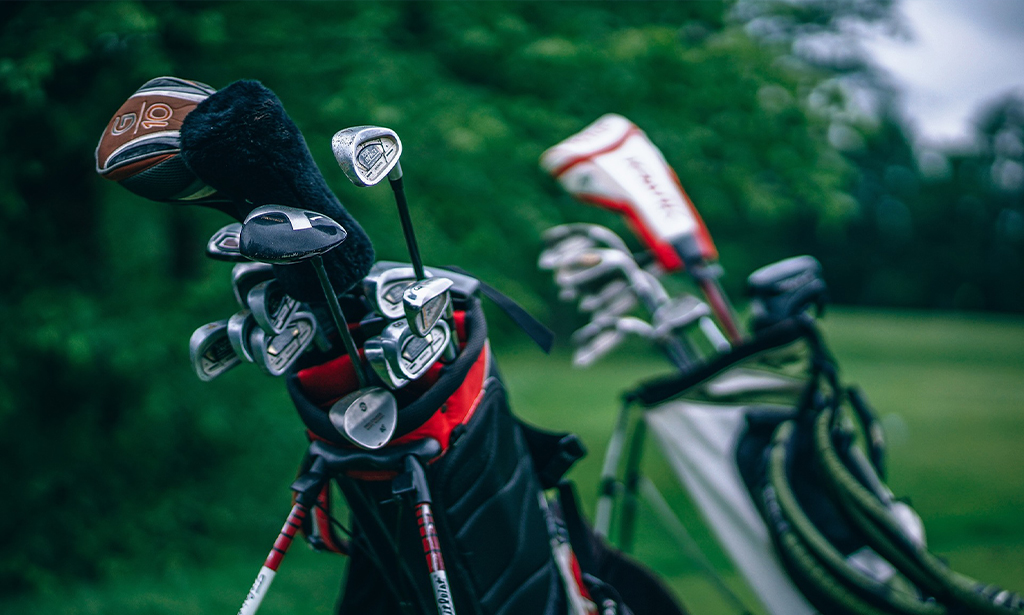Equipment
How New Equipment Rules Will Affect You and the Pros
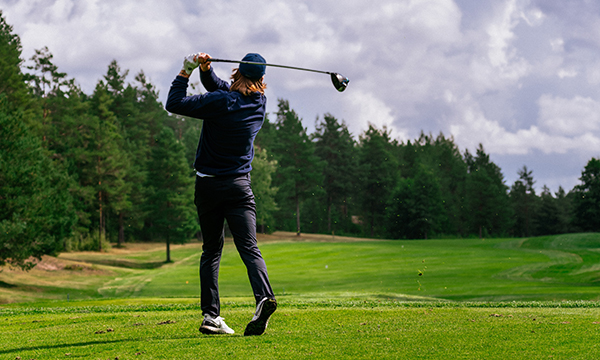
Saying the day of reckoning is upon us might be over the top. Still, it is expected that the United States Golf Association and its regulation-making partner, the R&A, will announce changes to the Rules of Golf in the days or weeks ahead that could have significant repercussions for our sport.
Two years ago, shortly before the COVID-19 pandemic began, golf’s governing bodies announced that after significant study, they believed the trend in distance and the lengthening of golf courses was harming the game. Left unchecked, they stated, golf’s environmental footprint would grow too large, and the increasing costs of water and maintenance would damage many facilities. Many people also stated that as elite golfers hit the ball farther and farther, historically significant golf courses that can not be lengthened or changed become obsolete.
The USGA and R&A requested input and feedback from several sources after releasing their 2020 report, and they commissioned studies to learn more about distance from various points of view. Last October they announced the creation of a new Model Local Rule that can be instituted at elite events that would reduce the maximum allowable club-length limit on non-putters from 48 inches to 46.
Now, equipment companies are waiting to learn what, exactly, the USGA and R&A are planning to announce next. Will the rules that govern clubs be changed? Will the regulations regarding golf ball performance be tweaked? If there are changes, will the USGA and R&A only create Model Local Rules to be adopted at the elite level, essentially creating bifurcation in reality but not in name?
Golfweek asked several engineers at major manufacturers – people who actually design clubs – to answer questions about the effects that widely speculated equipment changes might have on pros and recreational golfers. Four agreed to answer anonymously, while others declined. Below are their answers Golfweek received, edited only for clarity.
The USGA and R&A have created a Model Local Rule to limit club length to 46 inches (for non-putters). How much of an effect on distance do you think it will have?

Bryson DeChambeau drives his ball over the lake on the sixth hole during the final round of the 2021 Arnold Palmer Invitational at Bay Hill Club & Lodge. (Reinhold Matay-USA TODAY Sports)
Designer 1: Our research and findings concur with what was presented in the Distance Insights Project. The reduction in club length from 48 inches to 46 inches will result in a speed reduction and distance reduction of 3 or 4 yards. Our research also indicates, however, that the length and speed relationship is not linear, so the impact is greater at even shorter lengths.
Designer 2: Overall, I don’t see this as having a massive effect on distance. The number of players who have opted for longer than 46 inches is still relatively small in the grand scheme of things. For those players, it will obviously slow things down, but I don’t see it having a big effect on the overall averages.
Designer 3: Because it is a Local Rule that is going to be used only at elite-player events, it is certainly not going to affect the amateurs. For the tour pros, it depends. There are only a couple of guys that have dabbled in that space of longer drivers. We have had a few staff players tinker around with them. It’s a change of about 3 to 4 mph or ball speed, which at the tour level is about 12 yards.
Designer 4: We know that the effect of the Model Local Rule to reduce the maximum length to 46 inches will have basically zero effect. The average driver length on tour is closer to 45 inches than 46 inches, and almost no players were using drivers longer than 46 inches before the rule came in. We would expect to see zero change in driving distance on tour as a result of this rule change.
What would be the result for pros and recreational golfers if the maximum volume of drivers went from 460 cubic centimeters to 350 cubic centimeters?

Rory McIlroy (Scott Taetsch-USA TODAY Sports)
Designer 1: I’ll pass on this one.
Designer 2: This would have a much larger effect on the recreational players compared to the professionals. It likely wouldn’t even really pull the overall distance back for the pros, but for the recreational guy, this would result in an overall average distance being shorter. Center hits would likely be unaffected, but the size limitation would create lower moment of inertia and coefficient of restitution values that drop off quickly as the face gets smaller. This means the average shot should be shorter.
Editor’s note: Moment of inertia reflects the stability of a driver and its ability to resist twisting. Coefficient of restitution measures how quickly a club’s face snaps back after impact with the ball.
Designer 3: One of the things that we have been studying a lot recently is aerodynamics, and we have found that if you shrink the frontal area of a driver – current drivers have fairly large faces – you will get more speed. So, shrinking the overall volume, at the tour level, could actually increase performance because the drag would be less.
We also find that when you shrink the volume, in general, what you see is a shrinking of inertia, but most tour players hit it fairly close to the center, so it does not drive a lot of performance for their game or mis-hits. So, I don’t think it would have any reduction at the tour level, and for some players, shots could even go further with a smaller driver head.
At the recreational level, it would reduce some of the off-center performance for amateurs. They would give up some speed and lose some stability and control, so it would affect the amateurs much more than the tour players because tour players can easily adapt to small head sizes.
Designer 4: The effect of reducing driver volume will do little to change the distance on center hits but will affect distance mostly through a combination of reducing the moment of inertia, and therefore reducing distance on mishits, and potentially from trying to force golfers to choose to lay up from the tee more often.
What would be the results for pros and recreational golfers if the maximum characteristic time was reduced from 239 microseconds to 200 microseconds?

Phil Mickelson hits driver during a practice round at the 2021 Northern Trust. (David Dusek/Golfweek)
Editor’s note: The characteristic time test measures how long the ball is in contact with the face of a club, effectively measuring the springiness of the face. The longer the ball is in contact with the face, the more energy and speed is transferred to the ball.
Designer 1: The Notice and Comment (of the USGA’s study) proposed a 12-point microsecond reduction, which would render the majority of current drivers on the market non-conforming. The impact would be player-dependent, but the proposed reduction would be a few (2-3) yards. Any additional reductions would result in further reductions in distance for everyone.
Designer 2: This would result in a small but measurable difference for all players. At 100 mph, 18 microseconds equals 0.08 mph of ball speed, so a reduction of 39 microseconds to the rule would mean a speed reduction of about 0.2 mph. If you factor in the manufacturing tolerance, a reduction of 57 microseconds would mean a speed reduction of about 0.25mph. As speed goes up, these values increase. Again, it’s a small decrease, but it is measurable.
Designer 3: Our data shows that about 20 points of CT are equal to 1 mph of ball speed, so dropping from 239 to 200 would cost about 2 mph of ball speed on drivers. For amateurs, 2 mph usually equates to about 5 to 6 yards. At tour speeds, it’s closer to 8 to 10 yards. So we’d see the better players lose some and the average player lose some. In the end, we see the variations in testing with amateurs that there is a pretty high standard deviation, so they might not even notice losing 5 yards, but the better player would.
Designer 4: Characteristic time is intended to correlate with the coefficient of restitution. Our studies showed that to make a large and noticeable difference in distance, the COR (and CT) would have to be reduced a huge amount. [Lowering it to] 200 would be a major change for manufacturers but would not reduce distance by more than a few percent. To bring distance down by 5 or 10 percent would mean reducing CT down to pre-persimmon levels.
What would happen to pros and amateur golfers if the maximum club length was reduced again to 44 inches (for non-putters)?
Designer 1: When discussing driver length in conjunction with distance, consideration must also be given that the longer it is, the higher the chance for off-center hits and greater dispersion. The recently implemented limit on club length (for non-putters) from 48 inches to 46 results in a distance reduction of 3-4 yards. Our research indicates that the length-speed relationship is not linear and that there is an increased impact on the length-speed ratio as lengths get shorter.
Any reductions or caps shorter than 46 inches will result in disruption to the marketplace as all golfers (depending on length) will experience less speed and a reduction in distance.
Designer 2: This is one of the rare ones that might actually hurt the professional more than the average guy. It would likely bring down overall distance for all players. Still, for touring pros who don’t necessarily struggle to find the center [of the face] on longer shafts, their average will probably drop more than the recreational player who [would] likely now find the center more often.
Designer 3: Similar to the reduction from 48 to 46 inches, it would reduce distance a little bit. For some players, it would affect them more and others less. Two to 3 inches in length would probably be 3 to 4 mph ball speed for most amateurs.
Designer 4: Reducing maximum length to 44 inches would likely only affect distance on tour by a couple of yards. Many of the top players and longest hitters already choose to play a driver closer to 45 inches than 46. This change more than most others would affect shorter hitters more than longer hitters.
Is there a change the USGA and R&A could make to equipment that you can think of that would affect elite golfers more than recreational players?

Hideki Matsuyama plays his shot from the third tee during the third round of the 2021 Masters. (Rob Schumacher-USA TODAY Sports)
Designer 1: All proposed changes would impact all golfers.
Designer 2: The overall reduction in driver length is likely the one that would do this. My biggest issue with this is the effect it has on fitting. The average height and build of tour players are getting bigger and taller. For some overly tall players, the reduction in allowable length could be detrimental to them being able to have proper posture.
Designer 3: Going to a lighter golf ball. A lighter golf ball would reduce performance for everybody, but better players are a little more dependent on golf ball performance for their distance component so it would reduce distance for them a little bit more, but these are small numbers. We also know that bifurcation could also work, but some macro spec that changes everybody, we don’t see that there is an opportunity to do that.
Designer 4: Honestly, I’m not sure I want to throw any new ideas into the ring restricting the equipment.
From your experience being around tour players, how long would it take them to adapt to new equipment designed to reduce distance … and how long do you think it might take for club-level golfers to adjust?
Designer 1: Tour players have reached the pinnacle in golf because they have dedicated themselves to being the best they can be and, in most cases, optimized every area of their game to help them perform at the highest level. This includes selecting equipment, launch monitors, full-swing coaches, short-game coaches, sports psychologists, personal trainers and nutritionists, among other things that they believe will help them achieve their goals. If a piece of equipment – a tool of their trade – is altered, that impacts an important aspect of what they have worked on for years to perfect. Like anything else, some will adapt quicker than others. Depending on the extent of the change, some will have difficulty and never fully adapt. The impact and timeline are player-dependent.
As for club-level golfers, many are still currently able to play and enjoy the game, thanks to technology. If they are forced to hit the ball shorter and if the game becomes more challenging, many would find the game to be less enjoyable and would likely play less.
Designer 2: Tour players will adapt immediately. They will find ways to still hit [new clubs and balls] long. I would expect the overall impact of the changes to have a really minimal effect on professional golf as it’s viewed by everyday watchers. The long guys will still be unbelievably long. Course setup will dictate how they play.
Designer 3: Tour players would range from most adapting rather quickly to some guys figuring it out in a month or two. I don’t think it will take the tour players long. Remember, they practice every day. They have launch monitors right there and a coach who helps them to fine-tune their swing. Their swings will be much easier to adjust than an amateur’s.
Designer 4: Honestly, I think tour players would adapt very quickly to new regulations. It does somewhat depend on exactly what new regulations are enacted, but I feel like top players would adapt very well within a couple of weeks, no matter what. More tricky would be to go back and forth between two types of regulations (if there were some kind of bifurcation), but even then I feel like it is possible for top players. Top tennis players do it all the time, as do professionals in other sports. Less skilled players would take longer to adapt.
If the USGA and R&A mandate a change in the performance of golf balls by making them larger or less aerodynamic, how would that affect elite golfers and weekend players?

Golf balls stacked in a pyramid on a driving range. (Golfweek)
Designer 1: The golf ball has been highly regulated for decades with limits on size, weight, symmetry, initial velocity and overall distance. The line in the sand was drawn with the updated Overall Distance Standard protocol in 2003, and it has worked by the leveling of distance at the elite level over the past 15 years. There has only been a 6-yard increase in average driving distance on the PGA Tour since 2006.
A change in the size and/or aerodynamics of the golf ball would result in a reduction in performance and distance for all golfers, from the elite to the weekend player. The extent of the rollback would be player-dependent based on speed and launch conditions. However, the negative impact is largely linear.
Designer 2: This would likely have a bigger effect on the elite players as well. There could be noticeable differences when speed is higher and less noticeable differences when it’s lower.
Designer 3: We think that any changes in the specifications of golf balls would affect every player, probably in a linear fashion. For example, if I gave a club that goes faster to a player that swings at 100 mph and another that swings at 130 mph, it’s going to be linear in what they get, but the guy swinging at 130 mph is still going to be longer than the guy swinging at 100. But this would be on a percentage basis, so the long hitters are going to lose more, but it’s really going to be at the same percentage.
Designer 4: Our data shows that restricted distance golf balls, whether it be through ball radius or ball mass or aerodynamics, would affect longer hitters disproportionately more than shorter hitters. However, there are other consequences. A lighter or larger ball would be more affected by the wind and would make it more difficult to control, as well as shorter. It would also be more susceptible to start rolling on the green in the wind, which could be a problem. There is precedent for this in the past. In the 1930s there was a full season of golfers using different size balls on the course. In the end, the USGA settled on the 1.68-inch ball and the R&A settled on the 1.62-inch ball. My understanding is they were more concerned about balls rolling around on greens in the wind. It wasn’t until the 1970s that the British ball was changed to match the American ball.

Some people have put forth the idea that simply bifurcating the rules could solve a lot of problems. From a business standpoint, how would bifurcation help or hurt your company?

Tiger Woods plays the10th during a pro-am round of the 2022 PNC Championship at Grande Lakes Orlando. (Jeremy Reper-USA TODAY Sports)
Designer 1: At my company, we’re advocates for a unified game with all golfers in all countries playing by the same rules and equipment standards. This is a key component of the game’s enduring and aspirational appeal. Differing equipment standards, based on the level of skill, will sever one of the great attributes of the game, which has unified the game throughout history.
At what level would there be different equipment standards? What about juniors, college players, mid-ams and club professionals aspiring to qualify for the U.S. Open, the British Open or to play on one of the professional tours? Would those golfers be required to purchase different equipment for different calibers of play? The cost to golfers would escalate substantially, as would the complexity for the golf professional and retail community.
The design and manufacturing of equipment would become more complex and costly as products are developed on parallel paths.
Designer 2: As a company, it would likely have a small impact, with an increased number of SKUs and additional time and resources required to develop two sets of products, however it would ultimately come back on the consumer who would be charged more for everything.
The smaller quantities demanded for the “Tour” level stuff would mean higher costs due simply to the economies of scale. Additionally, the “handcuffs-off” version of traditional clubs would likely lead to new technologies, materials and manufacturing processes that would, again, drive the price to the consumer up.
Overall, the pros are the pros for a reason. They’re going to figure out exactly how to get the most out of whatever they are allowed to use. It’s important to remember as well that the PGA Tour and LPGA are ultimately about entertainment value. If everything were dialed back, so every course played as hard as a U.S. Open, viewership would go down. Once that happens, course setups would change to encourage more excitement, whether it be shorter holes or easier pins or something else. People like watching birdies and low scores. There’s a reason everyone loves the back nine at Augusta. Anyone (golfer or not) can appreciate watching the charge. If you sit a non-golfer down to watch the players chipping out sidewise and hoping to get up and down out of the rough at Shinnecock, you’re going to lose them.
Designer 3: It would be a challenge because we would have to make additional toolings for drivers, inventory those parts and manufacture them, so those are added business costs, but they are not huge. Many companies already make separate tools for tour-player products. It’s not something we don’t do already, but it could cause some confusion in the marketplace, especially at the elite amateur levels. Will college kids have to play this stuff? What about the club champions at the local clubs? Those types of players might want to have, or have to have, two sets of clubs created to different performance specifications. But we see this in other sports, like baseball, where if you are a professional player you have to use a wooden bat and at some levels of amateur play you can use an aluminum bat.
Designer 4: Bifurcation could certainly be a blessing and/or a curse. Taken in the positive, it is a chance to optimize equipment for professionals and recreational golfers separately. It’s a new challenge for the team.
However, it takes a lot of time and testing to develop new golf clubs. There would need to be a long lead time, and the R&D investment in clubs for the professionals would not be recouped directly. It would effectively double the research and development activities to design and develop two lines of clubs. There would also be uncertainty around who is using (and maybe buying) the “pro” clubs. Do some golfers need two sets of equipment? Confusion is generally not a good thing in the marketplace.
This article originally appeared on Golfweek.
Blog
Fore! Reasons Your Golf Cart Needs a Glow-Up (and How to Do It)
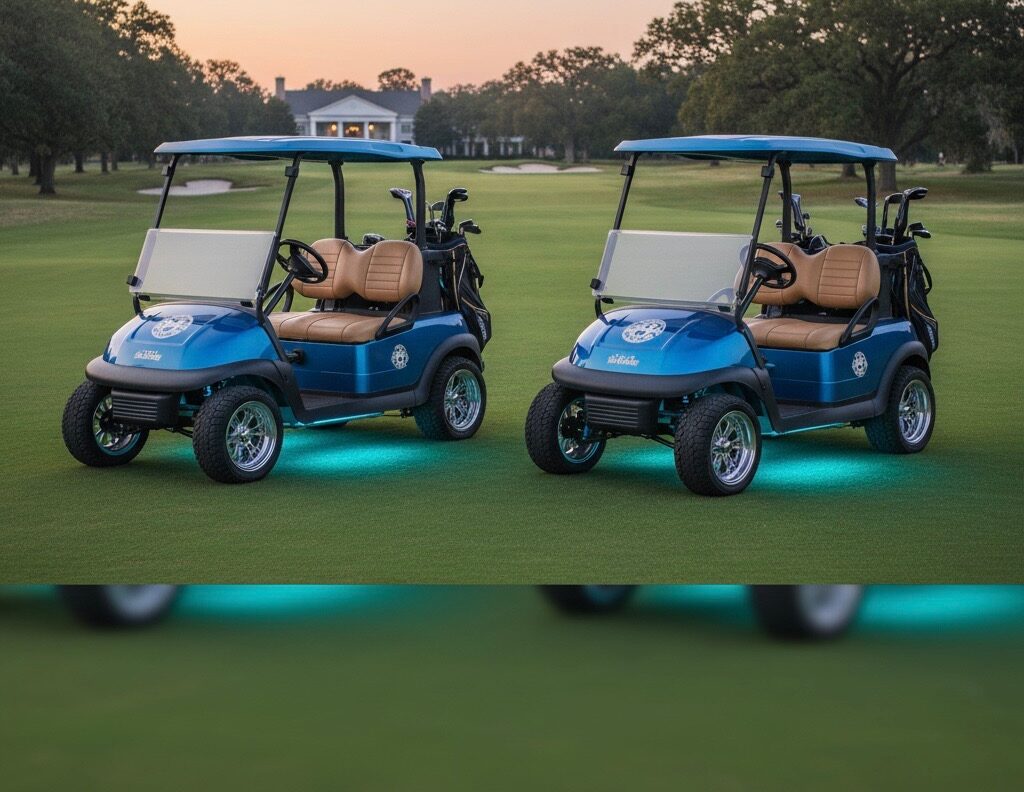
Let’s be honest. We all love the game, the fresh air, the occasional well-struck shot that makes us feel like a temporary Rory McIlroy. But what about the unsung hero of our weekend rounds? The trusty, sometimes rusty, golf cart. For too long, these magnificent machines have been relegated to mere utility. A box on wheels to get us from the pro shop to the first tee and back again. Well, I say no more! It’s time to infuse some personality, some pizzazz, some… us into our golf cart experience. Because a golf cart isn’t just a ride; it’s an extension of our golfing soul.
Think about it. We obsess over driver lofts, putter grips, and the perfect golf fashion ensemble. We want to look good, feel good, and play good. Why should our golf cart be any different? It’s often the first and last impression we make on the course, a mobile clubhouse, and sometimes, let’s be real, a temporary confessional after a particularly brutal triple bogey. So, if you’re ready to ditch the drab and embrace the fab, here are four compelling reasons your golf cart needs a serious glow-up, along with some hacker-approved tips to get you started.
1. Stand Out from the Rough (Literally)
Golf courses are a sea of sameness when it comes to carts. White, beige, maybe a splash of green if you’re lucky. But what if your cart announced your arrival with a flourish? Imagine pulling up to the tee box in a cart that screams “I’m here to have fun and maybe even sink a few putts!” A personalized cart isn’t just about aesthetics; it’s about making a statement. It’s about showing off your golf passion even before you hit your first drive.
Hacker Hack: Start with a custom paint job or some snazzy vinyl wraps. Think bold stripes, a subtle argyle pattern, or even a replica of your favorite golf course’s logo. For the truly committed golf enthusiast, consider some underglow LED lights. Not only do they look cool, but they also make those twilight rounds a whole lot more exciting. Don’t forget custom golf cart wheels and tires; they can completely transform the look and feel of your golf cart.
2. Boost Your On-Course Comfort (and Cool Factor)
Let’s face it, golf can be a long day. Hours spent traversing fairways, searching for wayward shots, and waiting for slow groups. Why not make those hours as comfortable as possible? A basic golf cart seat might suffice, but a souped-up one? That’s next-level golf life. We’re talking about enhancing your overall golf experience.

Hacker Hack: Invest in some premium, upholstered golf cart seats. Think marine-grade vinyl for durability and comfort. Add a custom steering wheel for better grip and a more luxurious feel. And for those scorching summer days, a golf cart fan is an absolute game-changer. You can even install a small cooler to keep your beverages chilled, making you the most popular person in your foursome. Consider a golf cart enclosure for those unexpected rain showers or chilly mornings, keeping you dry and warm.
3. Unleash Your Inner Technophile (and Score Better?)
Who says technology is just for your golf swing analyzer? Your golf cart can be a hub of innovation, making your rounds smoother, more enjoyable, and dare I say, potentially lowering your handicap. From GPS systems to rocking sound setups, there’s a world of golf cart tech waiting to be explored. We’re talking about smart golf accessories for your golf cart.
Hacker Hack: Integrate a golf GPS system directly into your dash. No more fumbling with your phone or rangefinder. Install a Bluetooth sound system so you can enjoy your favorite golf podcasts or pump up the jams between holes. And for the ultimate convenience, consider USB charging ports for your phone or other golf gadgets. Some golf carts even offer built-in ball washers and club cleaners, keeping your golf equipment pristine.
4. Express Your Golfing Personality (and Start Conversations)
Your golf cart is a canvas. It’s an opportunity to showcase your unique golf style and personality. Are you a traditionalist? A wild card? A minimalist? Your cart can reflect that. It’s a fantastic conversation starter and a way to connect with other golfers who appreciate a bit of flair. It’s all about golf cart customization and golf cart accessories that speak to you.
Hacker Hack: Personalize your golf cart with custom floor mats, a unique dash panel, or even a personalized license plate (check your local course rules first!). Add some fun decals or stickers that reflect your golfing sense of humor. A custom golf bag attachment can also add a touch of individuality. The possibilities for golf cart upgrades are endless, from practical additions like a sand bottle for divot repair to purely aesthetic touches.
So, next time you’re about to hop into that plain, run-of-the-mill golf cart, think about the potential. Think about the golf cart accessories, golf cart parts, and golf cart upgrades that can transform it into something truly special. Your golf cart isn’t just transportation; it’s an experience. It’s an extension of your golfing journey, and it deserves to shine as brightly as your best golf shot. Now go forth, hackers, and give your golf cart the glow-up it deserves!
Blog
Why Proper Club Fitting Is the Real Game Changer
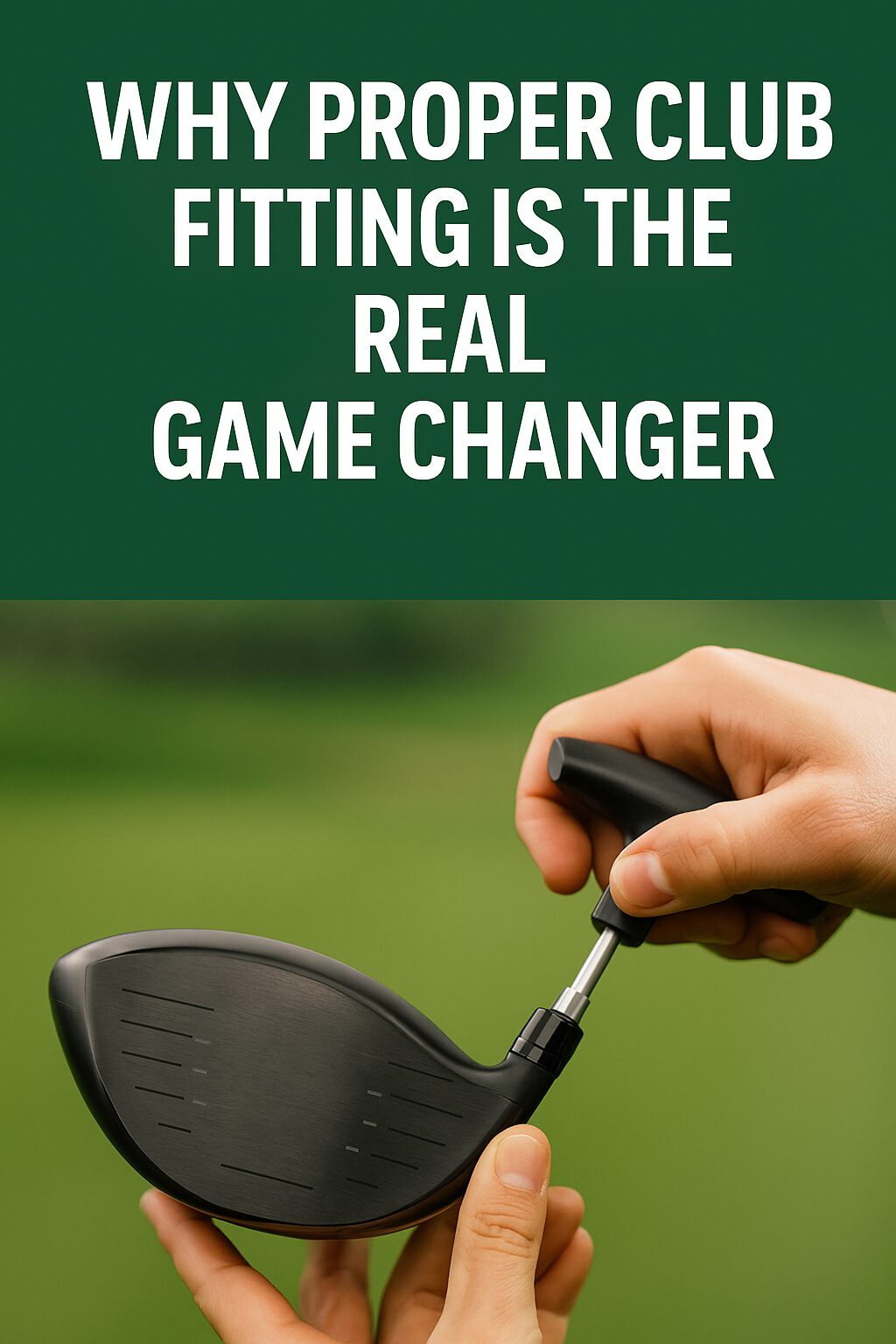
If you’ve ever walked off the 18th green thinking, “It’s not me, it’s the clubs,” well… you might be half right.
As a PGA Professional who’s watched thousands of swings—from scratch players to first-timers—I can tell you that one of the most overlooked keys to better golf is proper club fitting. Not just buying shiny new sticks off the rack, but taking the time to find clubs that are tailored to your swing.
You don’t need a Tour card to get Tour-level precision. Let’s talk about why club fitting matters, what it changes, and how it can truly transform your game from the tee box to the final putt.
The Myth of “Good Enough”
“I’m not good enough to be fit for clubs.”
That’s the most common thing I hear—and it’s completely backwards.
High-handicap golfers have even more to gain from club fitting than low-handicappers. Why? Because the equipment can help you fix ball flight, optimize distance, reduce mis-hits, and build confidence—all without having to reinvent your swing.
Off-the-rack clubs are designed to fit “average” specs. But no two golfers are the same. Length, lie angle, shaft flex, grip size—these all play a massive role in how the club interacts with your body and the ground.
What Happens in a Proper Club Fitting?
At its core, a fitting session is about matching the equipment to your natural swing—not forcing you to swing a certain way to fit the gear.
Here’s what a proper club fitting includes:
1. Interview & Swing Assessment
A certified fitter (or PGA pro like myself) will ask about your current set, ball flight tendencies, common misses, and goals. Then we’ll watch you hit some shots to get a baseline.
2. Launch Monitor Data
Using tools like TrackMan or Foresight, we’ll capture numbers like:
- Ball speed
- Launch angle
- Spin rate
- Club path and face angle
- Carry distance and dispersion
These numbers don’t lie—and they tell us what to tweak.
3. Testing Head & Shaft Combinations
You’ll hit several combinations of club heads and shafts to find what gives you the best performance. One degree of loft or a different shaft flex can make a huge difference.
4. Dialing In Lie Angle & Length
Lie angle affects directional control—too upright, and you might pull shots left; too flat, and you’ll miss right. Club length affects control, consistency, and strike location.
5. Grip Size & Feel
Don’t underestimate this. A grip that’s too thick or too thin can alter your grip pressure and release pattern.
Real Results—Backed by Data
One of my students recently went through a full iron fitting. He was using clubs he bought off the rack 10 years ago. His miss was a push-fade, and he struggled with distance control.
After 90 minutes, a combination of slightly shorter shafts, softer flex, and two degrees more upright lie changed everything. His dispersion tightened by 40%, and he gained an average of 12 yards per club. More importantly—his confidence skyrocketed.
And it wasn’t just him. Across the board, golfers who get fitted:
- Gain more consistent contact
- Reduce directional misses
- Improve distance gapping
- Hit more greens in regulation
- Score better, without changing their swing
The Mental Game Boost
Here’s a secret: it’s not just about numbers. Fitted clubs give you confidence. When you know the tool in your hand is built for you, you swing freer, commit more fully, and stop second-guessing every shot.
Confidence leads to better swings. Better swings lead to better results. It’s a cycle—and it starts with the right equipment.
What About Cost?
Yes, a proper fitting might cost $75–$150 depending on where you go. And yes, custom-fit clubs may be slightly more than what you’d pay at a big box store.
But if you’re already spending time and money on golf, wouldn’t you want to get the most out of it?
A one-time investment in fitting can save you years of frustration—and possibly hundreds spent chasing fixes that won’t work with ill-fitting clubs.
Look—I’ve given thousands of lessons in my career, and nothing changes a golfer’s outlook faster than finally swinging clubs that work with them, not against them.
Whether you’re a 5 handicap trying to fine-tune yardages or a 25 handicap tired of slicing your driver, a proper club fitting can absolutely be a game changer.
You don’t need a new swing—you just need the right tools.
So before you spend another dollar on swing gadgets or tip videos, find your local PGA professional or certified fitter and book a session. Your game (and your sanity) will thank you.
Want more ways to play better without starting over?
Visit ClickItGolf.com every week for practical golf improvement tips, equipment reviews, betting insights, and advice from golfers who live the game every day.
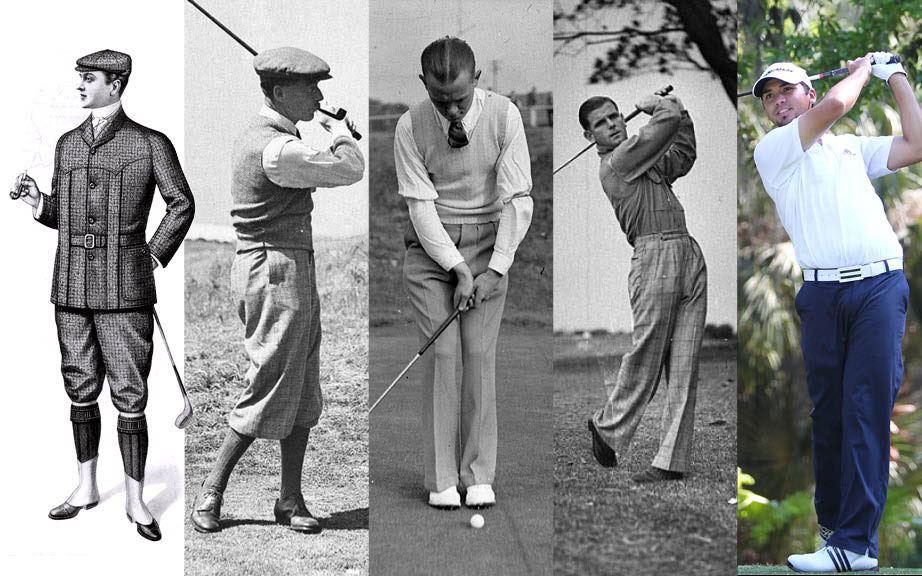
Golf attire has undergone significant transformations over the centuries, evolving from formal, restrictive clothing to today’s stylish, performance-oriented apparel.
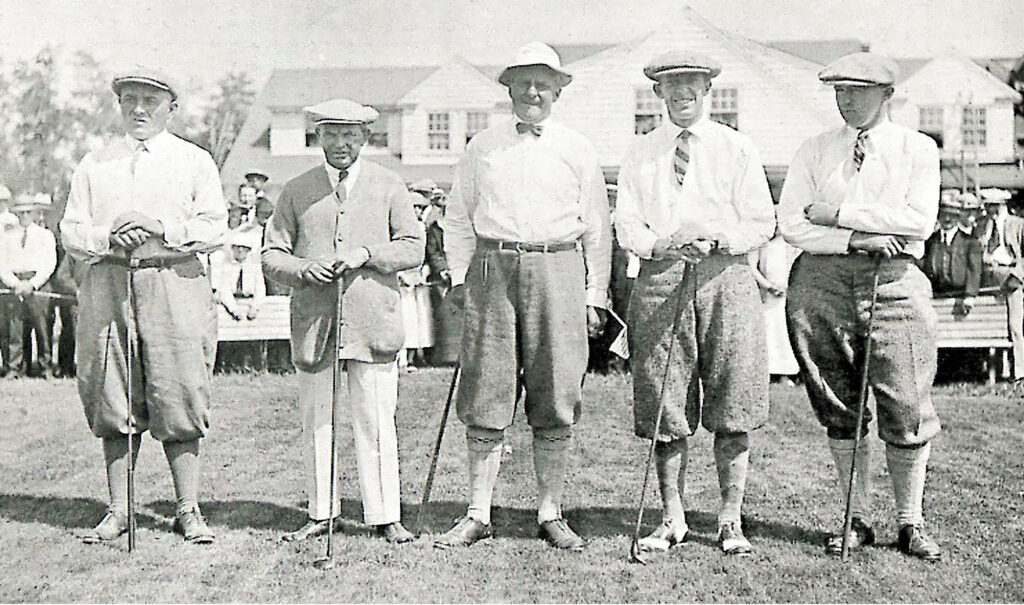
Before 1920
Originating in the cold, windy landscapes of Scotland, early golfers dressed primarily for warmth and protection. Typical attire included full tweed suits, often accompanied by waistcoats and neckties. Knickers, resembling knee breeches, were common, paired with high socks and sturdy leather shoes. Hats varied from pork-pie styles to wide-brimmed designs. While functional against harsh weather, this layered clothing restricted movement, impacting players’ swings.
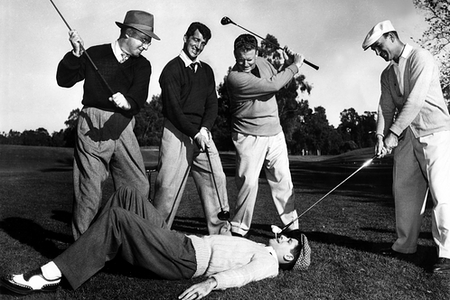
1920s – 1960s
As golf gained popularity in the United States, attire began to reflect contemporary fashion trends. The 1920s introduced plus-fours—knickers extending four inches below the knee—paired with two-toned shirts and, occasionally, ties. In cooler conditions, players opted for knitted wool cardigans or Norfolk jackets. The 1930s saw a shift to lighter fabrics, with short-sleeved knitted shirts and slacks becoming common. Outerwear like the Eisenhower jacket and cardigan sweaters with bell-shaped sleeves allowed greater freedom of movement. Footwear evolved to feature sturdy leather shoes with spikes, enhancing grip on the course.
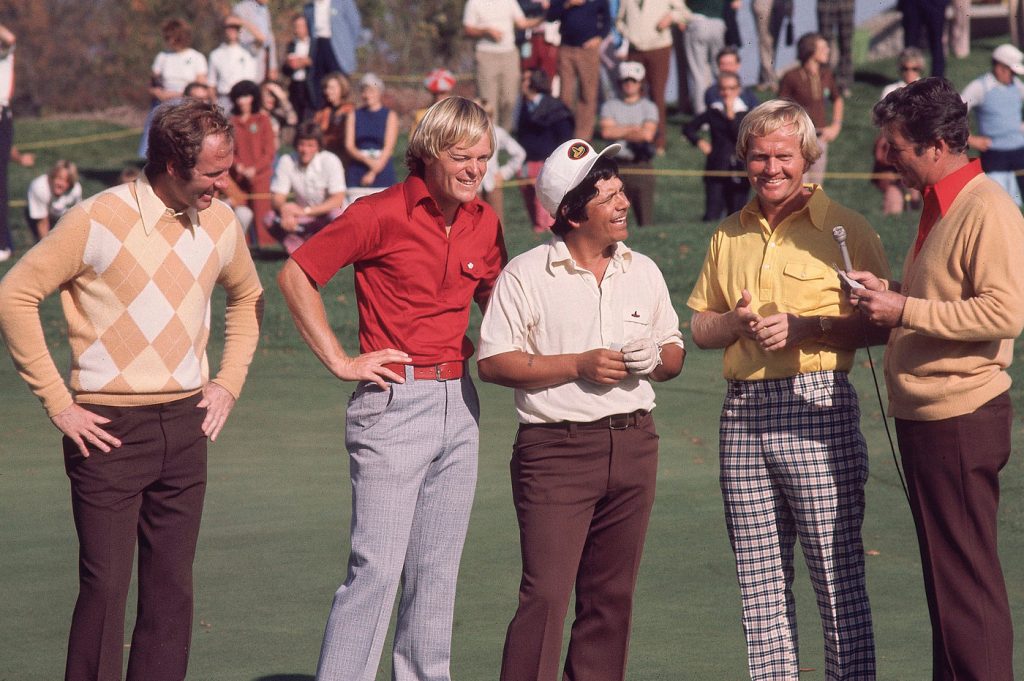
1960s – 2000
The 1960s marked a departure from muted tones, embracing vibrant colors such as greens, blues, and reds. Bold tops contrasted with lighter trousers or shorts, reflecting the era’s fashion sensibilities. Public figures like President John F. Kennedy popularized “Go to Hell” pants—colorful, shorter trousers in eye-catching hues. Recognizing the growing market, brands like FootJoy, Adidas, Nike, Polo Golf Ralph Lauren, and Ashworth launched dedicated golf apparel lines. However, endorsements by celebrity players remained understated during this period.

Since 2000
By the late 1990s, golf had cemented its status among top U.S. sports, leading to lucrative endorsements and a surge in golf club memberships. The game’s evolving dynamics emphasized athleticism, precision, and speed, necessitating advancements in attire. Lightweight, comfortable, and elegant clothing became the norm. Colorful, collared cotton T-shirts paired with tan or khaki shorts or trousers dominated the fairways. Headwear transitioned to pork-pie shapes and baseball caps, while footwear saw a shift from traditional leather to sporty designs from brands like Nike and Adidas.
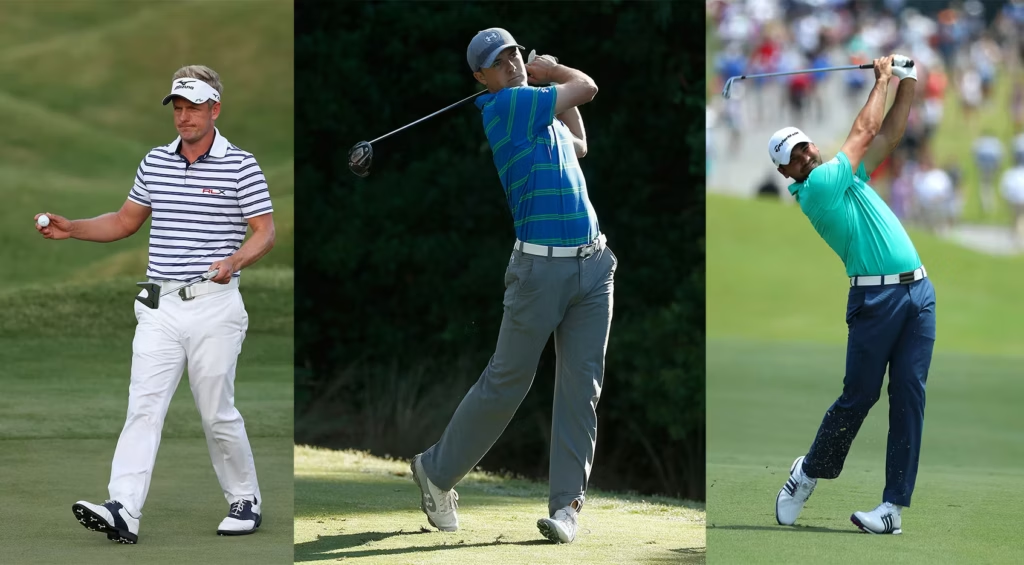
After 2010
The past decade has witnessed a significant shift in golf fashion, influenced by broader cultural trends and technological advancements. The rise of athleisure blurred the lines between sportswear and casual wear, leading to the incorporation of jogger-style pants, hoodies, and stretchy, moisture-wicking materials in golf attire. Brands like Lululemon and Under Armour introduced high-performance golf wear suitable both on and off the course. Collaborations with streetwear labels injected a youthful energy into the sport, attracting a new generation of players. Additionally, sustainability became a focal point, with companies like Reflo producing apparel from recycled materials, reflecting a growing environmental consciousness among consumers. citeturn0search26

This evolution of golf attire mirrors the sport’s journey from its traditional roots to a modern, inclusive game that embraces both style and functionality.
-

 Product Review6 years ago
Product Review6 years agoThe Perfect Practice Putting Mat Review by Jason Tenzer
-

 Blog4 years ago
Blog4 years agoLoophole Rule Offers PGA Tour Pros a Mulligan
-

 Blog4 years ago
Blog4 years ago2021 Buyer’s Guide: The Top 10 Value Golf Balls For Distance & Feel
-

 Blog5 years ago
Blog5 years agoGolf Marriage Counselor
-

 Blog6 years ago
Blog6 years ago9 Biggest Chokes Of The Past Decade
-

 Product Review6 years ago
Product Review6 years agoTHE ADJUSTABLE IRONS: WALKING STICKS GOLF CLUBS
-

 Blog4 years ago
Blog4 years agoWhat Your Golf Clubs Say About You
-

 Equipment6 years ago
Equipment6 years agoOHK Sports Interview by Jason Tenzer







